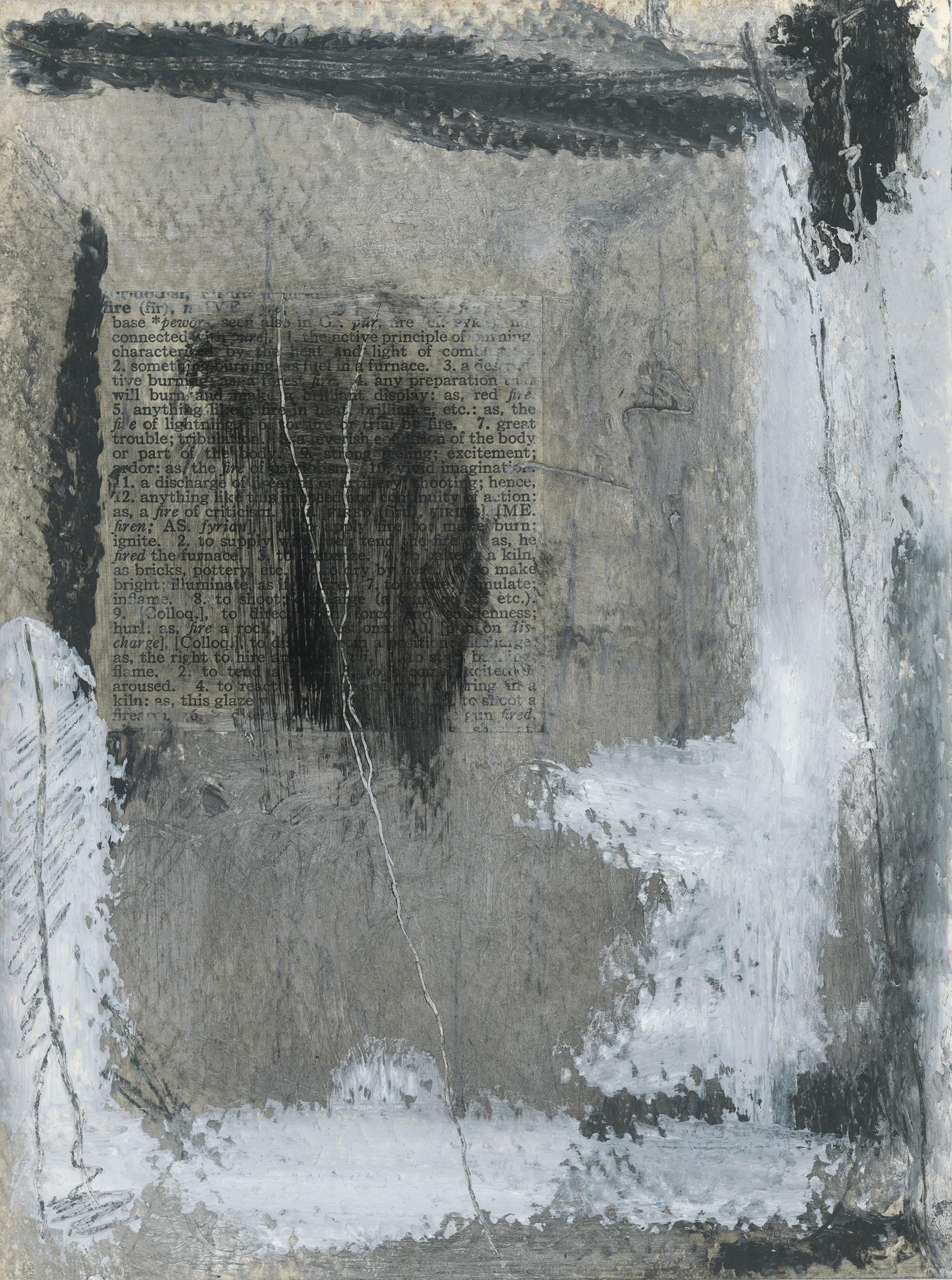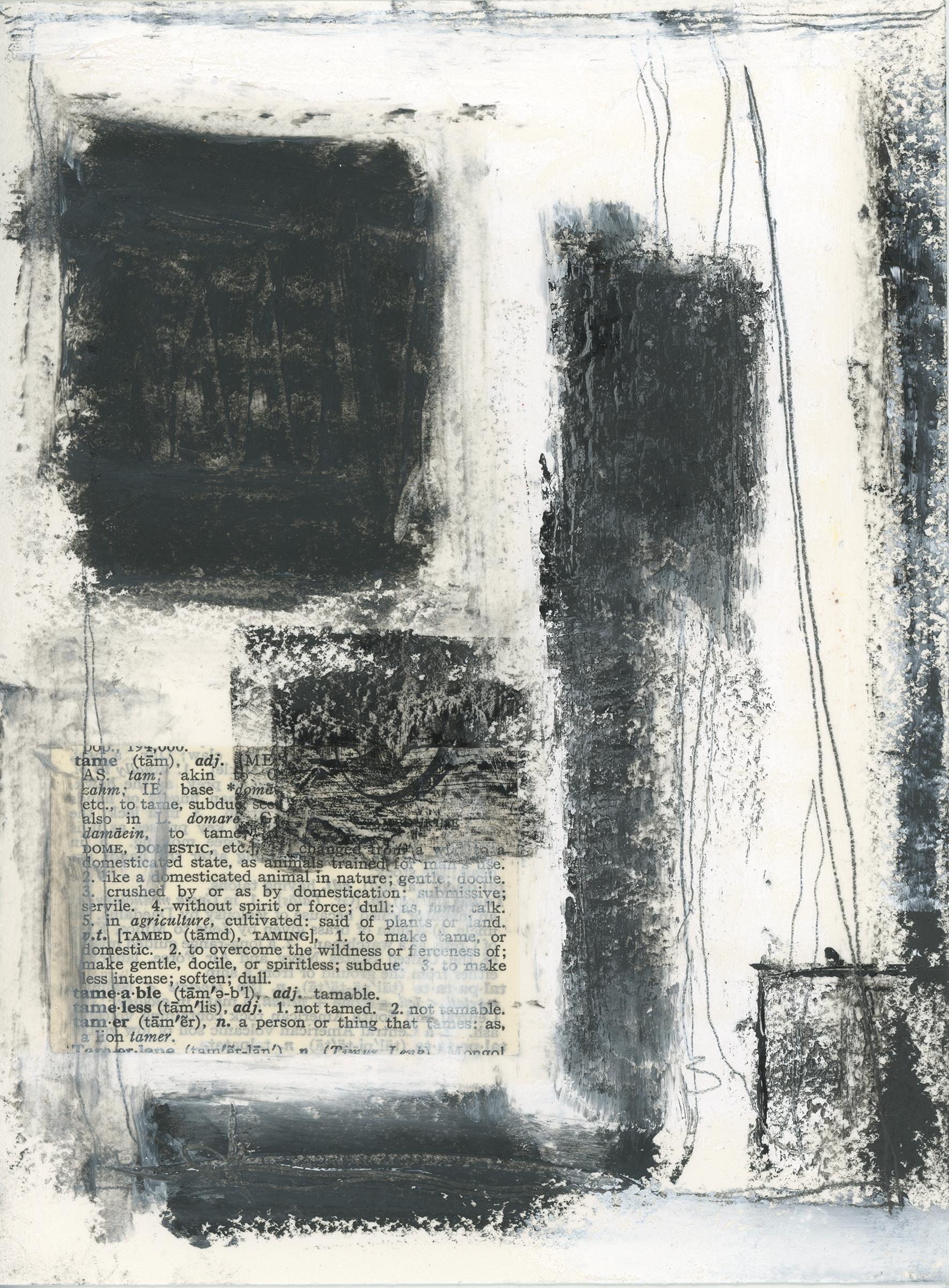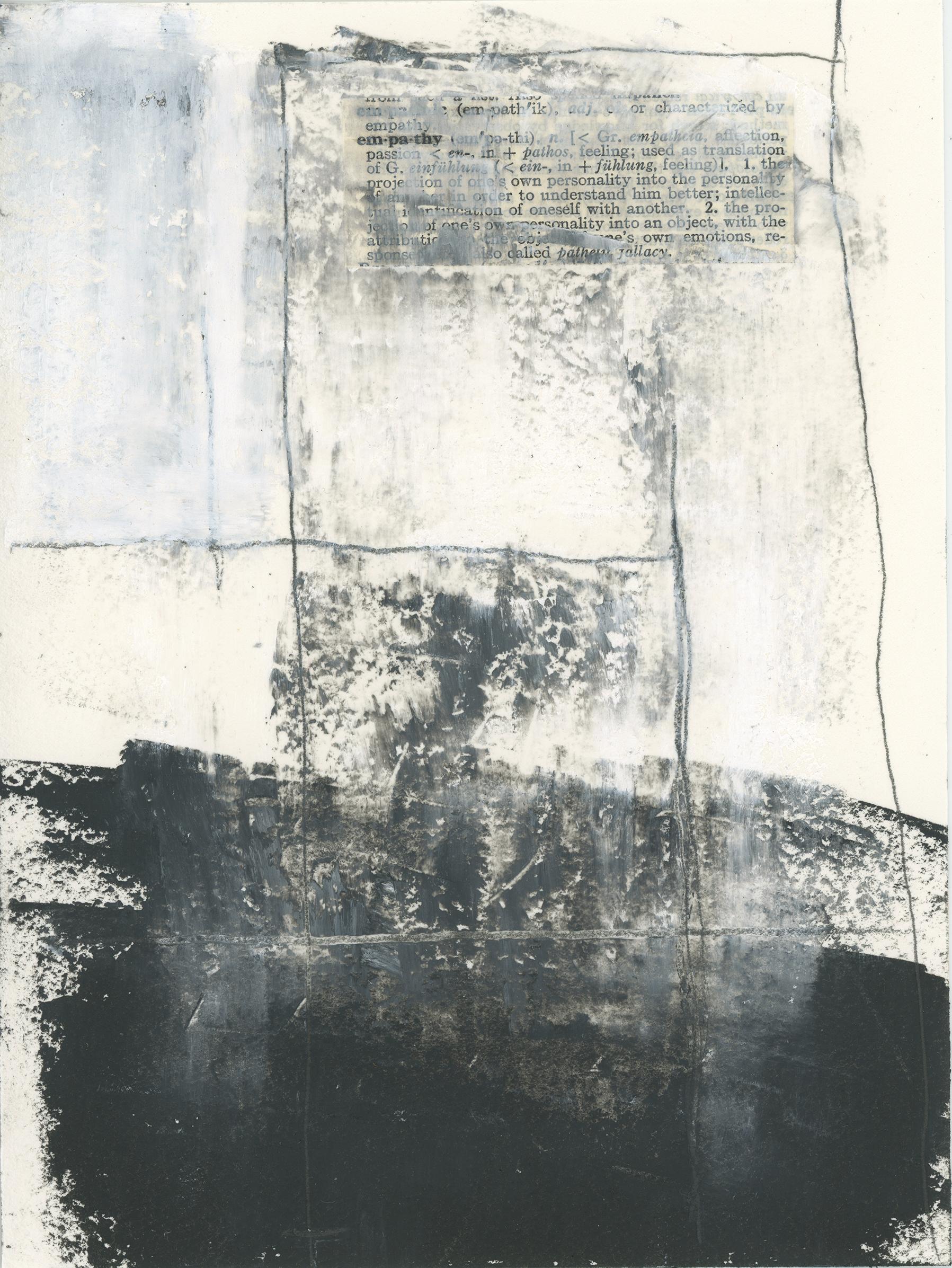Items Similar to "Second Theme" 1949 Abstract Mid 20th Century Geometric Non-Objective Hard Edge
Want more images or videos?
Request additional images or videos from the seller
1 of 8
Burgoyne Diller"Second Theme" 1949 Abstract Mid 20th Century Geometric Non-Objective Hard Edge1949
1949
About the Item
"Second Theme" 1949 Abstract Mid 20th Century Geometric Non-Objective Hard Edge
Burgoyne A. Diller (American, 1906-1965) "Second Theme" 1949. Pencil and crayon on paper. Signed and dated 'D. 49' (lower right). Image: 9 1/2 x 5 1/2 in. Andre Emmerich Gallery, New York. Martha Jackson Gallery, New York. Anderson Gallery, Buffalo, New York. David K. Anderson Grandchildren's Trust.
BURGOYNE DILLER (1906-1965) Recognized as the first American painter to embrace the tenets of Neo-Plasticism, Burgoyne Diller made an important contribution to the development of non-objective art in the United States. Working in a hard-edged geometric style, he produced paintings, drawings, and collages that paved the way for the development of American Minimalism during the 1960s and 70s.
Born in New York City in 1906, Diller began painting and drawing as a teenager growing up in Battle Creek, Michigan. Later, while attending Michigan State University in East Lansing on an athletic scholarship, he made weekend visits to the Art Institute of Chicago, where he familiarized himself with Impressionist and Post-Impressionist painting. He was especially drawn to the landscapes and still lives of Paul Cézanne, who modeled color to create structure and volume.
In 1929, Diller moved to Manhattan and enrolled at the Art Students League, where his teachers included such progressive-minded painters as Jan Matulka, Hans Hofmann, and George Grosz. Hofmann's concept of the "push-pull" effect of form and color exerted a strong influence on his early work, as did his growing familiarity with Analytical and Synthetic Cubism, German Expressionism, and other vanguard European styles. Diller had the opportunity to see some of this work firsthand, but he also kept abreast of developments abroad by reading journals such as Cahiers d'Art.
Diller completed his studies at the League in 1933, the year he had his first solo exhibition at the Contemporary Arts Gallery in New York. It was around this time that his paintings began to show the influence of the reductive, pared-down geometric compositions of the Dutch Constructivist Piet Mondrian and the equally restrained compositions of Kasimir Malevich and El Lissitsky, exponents of Russian Suprematism. In the ensuing years, Diller synthesized the crisp geometric forms and primary colors and blacks and whites of Constructivism with his own personal approach to line, space, and form, and in so doing arrived at a very personal style.
In addition to championing the cause of abstraction through his own work, Diller promoted non-objective painting through his role as an arts administrator. Indeed, despite his reputation as an innovator, he failed to sell any of his paintings during the 1930s, a time of hardship for many artists. In 1935 he was hired as Director of the Mural Division of the WPA Federal Arts Project and in that capacity he provided commissions to fellow abstractionists such as Arshile Gorky, Stuart Davis, Willem de Kooning, Ilya Bolotowsky, and others. Diller also promoted non-traditional art throughout his membership with American Abstract Artists (established 1936), exhibiting with that group from 1937 to 1939.
Diller was employed by the Federal Arts Project until 1940. He continued to paint throughout the 1940s and 50s, although his output decreased considerably. In his later work, he turned to increasingly simplified compositions and the movements and rhythms of his forms took on a quieter tone.
During the second world war, Diller was director of the War Service Art Section in New York. He was also connected to the navy's visual aid division, where he designed a black-and-white signal system for ship-to-ship communication. In 1945, he joined the design department at Brooklyn College, remaining there until 1964. Since his death in New York in 1965, Diller's work has been included in many exhibitions devoted to modern art in the United States, including Abstract Paintings and Sculpture in America: 1927-1944, organized by the Carnegie Museum of Art in Pittsburgh (1983). There have also been several posthumous exhibitions, most recently Burgoyne Diller, held at the Whitney Museum of American Art in New York (1990).
Examples of Diller's work can be found in major public collections, including the Whitney Museum of American Art, New York; the New York University Art Collection; the National Gallery of Art, Washington, D.C.; the Walker Art Gallery, Minneapolis; the Yale University Art Gallery, New Haven, Connecticut; the Cleveland Museum of Art; the Carnegie Museum of Art, Pittsburgh; the Syracuse Museum of Fine Arts, New York; and the Sheldon Memorial Art Gallery, Lincoln, Nebraska, among others.
- Creator:Burgoyne Diller (1906-1965, American)
- Creation Year:1949
- Dimensions:Height: 15 in (38.1 cm)Width: 11 in (27.94 cm)Depth: 2 in (5.08 cm)
- Medium:
- Movement & Style:
- Period:
- Condition:
- Gallery Location:New York, NY
- Reference Number:1stDibs: LU115629650532
About the Seller
5.0
Platinum Seller
These expertly vetted sellers are 1stDibs' most experienced sellers and are rated highest by our customers.
Established in 2008
1stDibs seller since 2019
165 sales on 1stDibs
Typical response time: <1 hour
- ShippingRetrieving quote...Ships From: Pawling, NY
- Return PolicyA return for this item may be initiated within 3 days of delivery.
More From This SellerView All
- MAGIC CASEMENT, Abstract Non-Objective Mid-Century Pastel Color Field DrawingLocated in New York, NYMAGIC CASEMENT, Abstract Non-Objective Mid-Century Pastel Color Field Drawing "Magic Casement," 16 x 20 ¾ inches, Initialed JD and dated February 22, 1967 lower left, Titled lower right. Pastel on paper. The framed work measure 18 x 23 inches. Provenance: James Daugherty...Category
1960s Abstract Abstract Drawings and Watercolors
MaterialsPaper, Pastel
- Abstract Landscape Mid 20th Century Work on Paper Hamptons, NY Drawing PastelBy Robert DashLocated in New York, NYAbstract Landscape Mid 20th Century Work on Paper Hamptons, NY Drawing Pastel. Signed and dated '62 lower right. 9 x 12 inches (sight) and 15. 1/2 x 18 1/2 inches framed. BIO Robert Dash is known for his Hamptons paintings...Category
1960s Abstract Abstract Drawings and Watercolors
MaterialsPaper, Pastel
- Abstract Non Objective Work on Paper Guggenheim Woman Artist Drawing 1940s w/cBy Hilla Rebay von EhrenwiesenLocated in New York, NYAbstract Non Objective Work on Paper Guggenheim Woman Artist 1940s Drawing w/c HILLA REBAY (1890 - 1967, GERMAN/AMERICAN) Abstract Watercolor on paper, c. 1945. 8x9 inches. Provenance: Estate of Hilla Rebay; Gary Snyder Fine Art, NY. In March of 1996, Snyder Fine Art opened its exhibition, Museum of Non-Objective Painting: American Abstract Art. Gary Snyder acquired a large body of works from the Hilla Rebay Estate, many of the works on paper spent decades archivaly stored in flat files with fresh colors and immaculate paper. BIO A woman credited largely for the existence of the Solomon R. Guggenheim Museum in New York City, Hilla Rebay also was an accomplished artist in modernist styles that included collage and biogmorphic-linear oil paintings. She is remembered primarily for being the key person in first exposing the American public to avant-garde art and creating revolutionary museum environments for that art. To remind the public that Rebay was an artist in her own right, curators at the Guggenheim Museum held a retrospective of her work in the spring and summer of 2005. Hilla Rebay (pronounced reh-bye) was born to minor nobility in Strasbourg, Alsace and had the full name of Baroness Hildegard Anna Augusta Elisabeth Rebay von Ehrenwiesen. Her father, a career army officer from Bavaria, and her mother encouraged her obvious childhood art talent. She studied locally and then enrolled in 1909 at the Academie Julian in Paris. There she was much influenced by avant-garde movements especially theosophist artists and writers led by Wassily Kandinsky "who helped formulate her lifelong belief in the power of intuition in art-making and other areas of life" (Glueck). In 1910, she spent time in Munich where she was further exposed to modern art, and she returned to Paris in 1913, having exhibited work in Cologne and Munich. In Paris she studied at the Academie Julian. By 1914, she was exhibiting with the Secession Group in Munich, the Salon des Independants in Paris, and the November Gruppe in Berlin--all rebelling against prevalent realism and traditional teaching methods. In Berlin, she associated with many modernist artists including Vasily Kandinsky, Paul Klee, and Marc Chagall. In 1917, she med Rudolph Bauer...Category
1940s Abstract Abstract Drawings and Watercolors
MaterialsPaper, Watercolor
- ABSTRACT American Woman Abstract Non-objective Mid 20th Century Modern DrawingBy Irene Rice PereiraLocated in New York, NYABSTRACT American Woman Abstract Non-objective Mid 20th Century Modern Drawing Irene Rice Pereira (1902-1971) Abstract 8 1/2 x 5 1/2 inches Watercolor, gouache, and ink on black pap...Category
1950s Abstract Abstract Drawings and Watercolors
MaterialsPaper, Watercolor, Gouache
- ABSTRACT American Woman Abstract Non-objective Mid 20th Century Modern DrawingBy Irene Rice PereiraLocated in New York, NYABSTRACT American Woman Abstract Non-objective Mid 20th Century Modern Drawing Irene Rice Pereira (1902-1971) Abstract 12 x 6 1/2 inches Watercolor, gouache, and ink on black paper ...Category
1950s Abstract Abstract Drawings and Watercolors
MaterialsPaper, Watercolor, Gouache
- Abstract Non Objective Work on Paper Guggenheim Woman Artist Drawing 1940s w/cBy Hilla Rebay von EhrenwiesenLocated in New York, NYAbstract Non Objective Work on Paper Guggenheim Woman Artist 1940s Drawing w/c HILLA REBAY (1890 - 1967, GERMAN/AMERICAN) Abstract watercolor and graphite on paper 14 x 16 1/2 inche...Category
1940s Abstract Abstract Drawings and Watercolors
MaterialsPaper, Watercolor
You May Also Like
- Untitled (Līnea Study), 2022Located in Washington, DCOriginal work by Mary Early. Graphite, wax crayon, and sumi ink on Arches paper, 12.25 x 16". "The production, or “pouring,” of beeswax elements has become a meditative process that is integral to my art practice, serving as an observation of time, materials, and space. The raw beeswax I use has taken its form at the end of a long series of natural processes followed by a manufacturing process, and once it is in my hands, the studio becomes a factory. I apply my own methods of transforming the material by casting the beeswax into three-dimensional forms. Once I have fixed both a place and a time in the future for a potential installation, I begin to determine how the beeswax lines will take their aggregated shape in that space and, simultaneously, how many lines might be manufactured for that particular space in the amount of time available." Mary Early (born 1975, Washington, DC) lives and works in Washington, DC. She studied visual art, film, and video at Bennington College, and her work has been exhibited at the United States Botanic Garden, Washington Project for the Arts, the Corcoran Gallery of Art, Second Street Gallery (Charlottesville, VA), Hemphill Fine Arts (Washington DC,) the Austrian Cultural Forum (Washington DC), Galerie Im Ersten (Vienna, Austria), Kloster Schloss Salem (Salem, Germany), Kunstlerbund Tubingen (Tubingen, Germany), and the American University Museum (Washington DC) among other regional and national galleries. Her early work incorporated formed concrete, tarpaper and paraffin wax, fabricated wood structures, and, increasingly over the years, surfaces coated with wax as a method of preserving or concealing an object within. Recent works have relied solely on solid forms cast in wax, abandoning the use of any permanent armature. Temporary installations are guided by schematic drawings and plans, which then serve as a permanent record. In 2014 she exhibited her first large-scale installation of wax lines at Second Street Gallery in Charlottesville, VA, followed by temporary installations in response to various historical sites in Salem, Germany (2016) and Tubingen Germany (2017). In 2017 she participated in the exhibition “Twist-Layer-Pour” at the American University Museum, which included Untitled [Curve], an installation of thousands of beeswax lines assembled on the floor of the museum. In spring 2018 she was commissioned to create a temporary installation at the Sun Valley Center for the Arts, Sun Valley Idaho. This work took the form of two intersecting curtains of hanging beeswax lines bisecting a 12’ foot x 18’ foot room, providing an immersive and enclosed viewing space. Early’s work is included in the collections of the US Department of State/Embassy of Panama, Kimpton Hotels, and the District of Columbia Art Bank among other public and private collections. She is a recipient of the Artist Fellowship Grant from the DC Commission on Arts & Humanities, Washington DC (2020, 2019, 2018, 2017, 2016, 2015, 2014, 2011, 2009, 2007). Early is the director of HEMPHILL Fine Arts, Washington, DC, and serves on the boards of Hamiltonian Artists and Washington Sculptors Group. She handles the work of contemporary artists and artist estates, including the work of William Christenberry, Colby Caldwell, Hedieh Javanshir Ilchi, Linling Lu, Mingering Mike, Robin Rose, Renée Stout...Category
21st Century and Contemporary Abstract Geometric Mixed Media
MaterialsArchival Paper, Graphite, Wax Crayon, Sumi Ink
- Power Are My Words #1 Contemporary Original Mixed Media Painting on PaperLocated in Roselle Park, NJPower Are My Words This series looks at the emotion around words. The way we use words can be uplifting or hurtful, empowering or degrading. Words have always been a tool to suppres...Category
21st Century and Contemporary Abstract Mixed Media
MaterialsPaper, Oil Pastel, Oil, Pencil
- Power Are My Words #6 Contemporary Original Mixed Media Painting on PaperLocated in Roselle Park, NJPower Are My Words This series looks at the emotion around words. The way we use words can be uplifting or hurtful, empowering or degrading. Words have always been a tool to suppres...Category
21st Century and Contemporary Abstract Mixed Media
MaterialsPaper, Oil Pastel, Oil, Pencil
- Power Are My Words #4 Contemporary Original Mixed Media Painting on PaperLocated in Roselle Park, NJPower Are My Words This series looks at the emotion around words. The way we use words can be uplifting or hurtful, empowering or degrading. Words have always been a tool to suppres...Category
21st Century and Contemporary Abstract Mixed Media
MaterialsPaper, Oil Pastel, Oil, Pencil
- Power Are My Words #11 Contemporary Original Mixed Media Painting on PaperLocated in Roselle Park, NJPower Are My Words This series looks at the emotion around words. The way we use words can be uplifting or hurtful, empowering or degrading. Words have always been a tool to suppres...Category
21st Century and Contemporary Abstract Mixed Media
MaterialsPaper, Oil Pastel, Oil, Pencil
- Power Are My Words #8 Contemporary Original Mixed Media Painting on PaperLocated in Roselle Park, NJPower Are My Words This series looks at the emotion around words. The way we use words can be uplifting or hurtful, empowering or degrading. Words have always been a tool to suppres...Category
21st Century and Contemporary Abstract Mixed Media
MaterialsPaper, Oil Pastel, Oil, Pencil
Recently Viewed
View AllMore Ways To Browse
1949 Paintings
1949 Painting
Hard Edge
Mid Century Geometric Art
From The Second World War
Edge Art Line
Geometric Abstract 20th Century
Geometric Abstract Mid Century
Second Line
Second Time Around
Objective Gallery
Mid Century Abstract Expressionism
Mid Century Modern Plastic Art
Midcentury Abstract Expressionism
Hard Edge On Paper
Objective Collection
Non Objective
Non Objective Art





